Bull Spiritual Meaning and Symbolism in the Bible

The Bible uses many symbols to teach us deeper spiritual lessons. Animals are some of the most common symbols found within its pages. The bull is one such animal, appearing with a variety of spiritual meanings.
Understanding what the bull represents can help us gain a richer understanding of biblical stories and ideas. This powerful creature can point to strength and might, but it can also symbolize false worship and divine anger. Learning about these different symbolic layers allows us to see the scriptures in a new light.
Key Takeaways

- Bulls often represent physical power and dominance, as seen in descriptions of wild oxen.
- They can also symbolize fertility and the blessings of abundance, reflecting their role in agriculture.
- In the Old Testament, bulls were key animals in the sacrificial system, used for atonement and consecration.
- The golden calf episode in Exodus shows the bull as a stark symbol of idolatry and disobedience.
- Sometimes, bulls signify uncontrolled power and divine judgment, particularly in prophetic passages.
Bulls as Symbols of Strength and Power

The image of a bull often brings to mind its impressive physique. Bulls are strong animals with great power. This natural strength made them a fitting symbol for might in ancient times. Biblical writers used this association to help people understand concepts of power.
Physical Might
The sheer size and muscular build of a bull make it a clear symbol of physical power. The Bible mentions the strength of wild oxen, stating in Job 39:11, “He scorns the clamor of the city; he does not hear the shouts of the driver.” This highlights the idea of a powerful and independent force. You can see this connection in different parts of scripture.
The untamed energy of a bull can represent overwhelming power. When facing enemies, one writer of psalms compared them to strong bulls, saying in Psalm 22:12, “Many bulls encompass me; strong bulls of Bashan surround me.” This created a vivid picture of a powerful threat. True strength should be used with wisdom.
Royal and Earthly Power
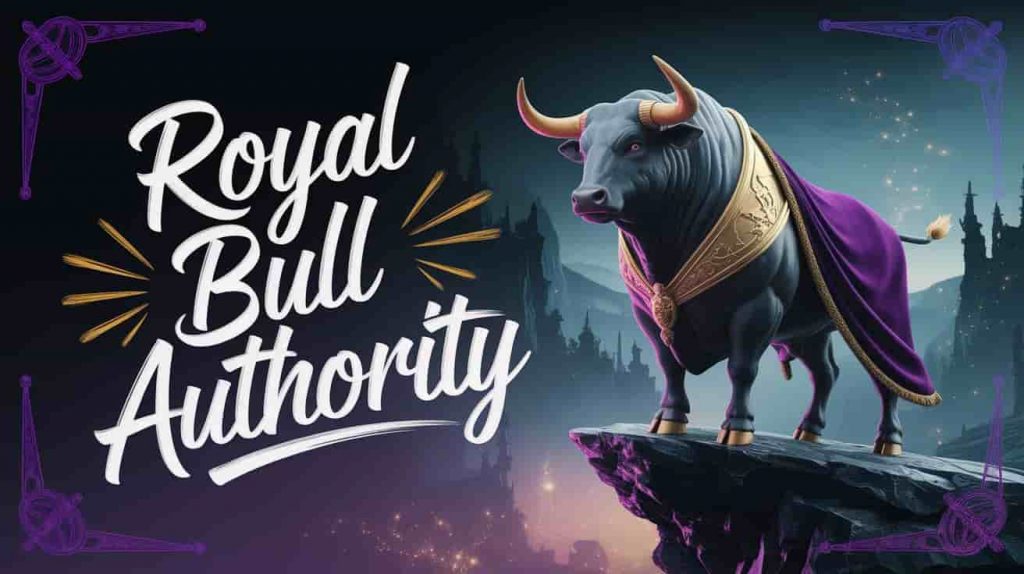
In ancient cultures, bulls were frequently linked to kings and leaders. People saw the bull’s strength as a reflection of a ruler’s authority. This cultural background helps us understand some biblical images. While the Bible might not always directly say a bull means a king, the idea of power is there. Nations known for their strength were sometimes compared to mighty bulls.
The link between bulls and rulers was a common one in the ancient world. Kings wanted to be seen as strong and powerful like bulls. Earthly authority carries significant responsibility.
Divine Strength
The immense power of a bull could also point to the strength of God. While God is not a physical being, the Bible uses images we understand to describe Him. The incredible power of a bull can give us a small idea of God’s unlimited power. This symbol shows a force beyond what humans can fully grasp.
God’s power is often described using strong animal imagery. Just as a bull is mighty, God’s strength has no end. Psalm 147:5 declares, “Great is our Lord, and abundant in power; his understanding is beyond measure.” God’s power is a source of comfort and security.
Bulls and Fertility and Abundance
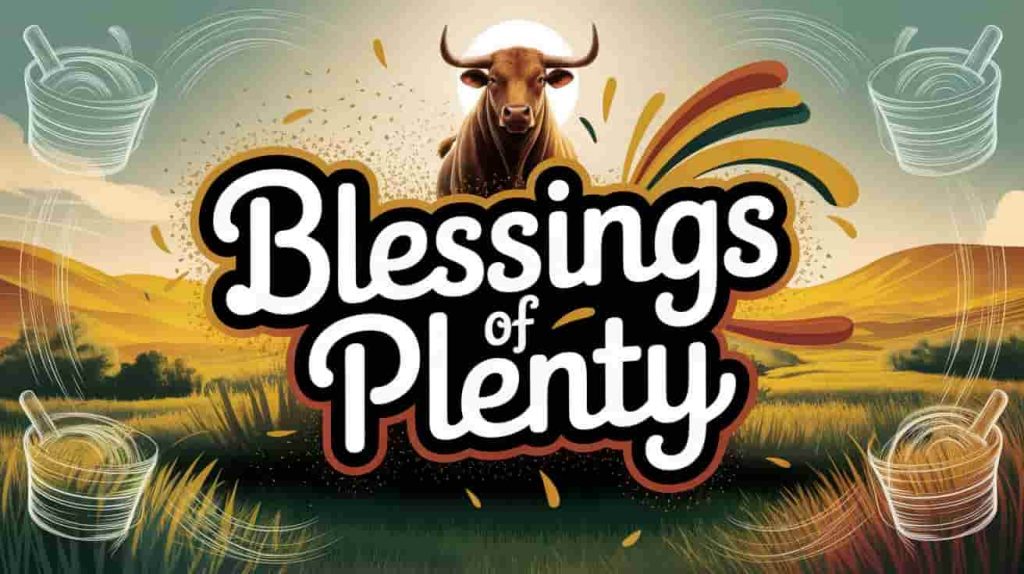
Bulls were very important in farming communities long ago. They helped plow fields and were needed for herds to grow. Because of this, bulls became connected with good harvests and plenty. In the Bible, having many animals, including bulls, showed that someone was wealthy and blessed. Genesis 13:2 notes that “Abram was very rich in livestock, in silver, and in gold.”
The health of bulls meant good farming and enough food for people. Their strength helped produce the things people needed to live. This linked bulls to the idea of having enough. Be thankful for the blessings of abundance.
Virility and Procreation
Bulls were also seen as a symbol of male strength and the ability to have offspring. Their vigor represented the continuation of families and future generations. Although the Bible may not always directly use bulls in this way, the people of that time would have understood this connection.
The image of a strong bull naturally brought to mind the power to create new life. This added to the bull’s symbolic meaning. Life is a precious gift to be cherished.
Spiritual Fruitfulness
The energy and strength of a bull can also represent spiritual growth. Just as a bull helps create physical abundance, spiritual strength can lead to positive results in a person’s faith. This suggests that inner power and dedication can bring spiritual rewards.
A life lived with strong faith can produce much good. This is similar to the way a healthy bull contributes to plenty. Nurture your faith to see spiritual growth.
Bulls in the Sacrificial System
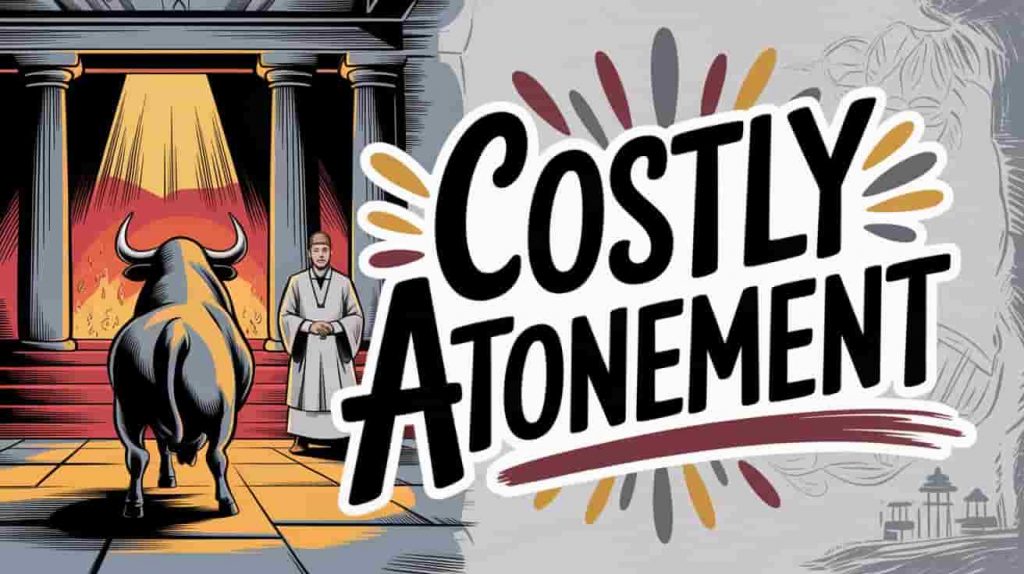
The Old Testament sacrificial system involved various types of offerings, each with its specific purpose. Bulls held a significant place within this system. Their use varied depending on the specific need for atonement, fellowship, or consecration.
Bulls as Priestly Sin Offerings
The regulations for sin offerings in the Old Testament specified different animals based on who had sinned. When the high priest sinned, bringing guilt on the people, the required offering was:
- A young bull without defect: As stated in Leviticus 4:3, “If the anointed priest sins, bringing guilt on the people, then he shall offer for the sin that he has committed a bull without blemish to the Lord as a sin offering.” This costly offering highlighted the seriousness of the leader’s sin.
- Specific rituals: These included laying hands on the bull’s head and slaughtering it before the Lord, as detailed in Leviticus 4:4-5.
- Application of blood: The priest would take some of the bull’s blood into the tent of meeting and sprinkle it before the veil of the sanctuary, described in Leviticus 4:5-7.
This detailed process underscored the gravity of sin and the need for thorough cleansing. Leaders bear a heavy spiritual responsibility.
Bulls in Other Sin Offerings
Sin offerings were also required for the entire congregation of Israel under certain circumstances. The prescribed offering in such cases was also a young bull without defect, and the rituals mirrored those for the high priest’s sin offering. This communal sacrifice emphasized the shared accountability of the nation before God.
Leviticus 4:13-14 outlines this requirement: “If the whole congregation of Israel sins unintentionally and the thing is hidden from the eyes of the assembly, and they do any one of the things that by the Lord’s commandments ought not to be done, and they incur guilt, when the sin that they have committed becomes known, the assembly shall offer a bull from the herd for a sin offering and bring it before the tent of meeting.”
The community’s need for atonement was addressed through this significant offering. It reinforced the idea that sin affects the whole group. We are all accountable for our actions and the well-being of our community.
Bulls in Peace Offerings and Fellowship Meals
Peace offerings served a different purpose, focusing on fellowship with God and others. Bulls were among the animals that could be offered as peace offerings. These offerings involved:
- Choice of animal: Individuals could offer a bull or other animals from their herd or flock, as mentioned in Leviticus 3:1, “If his offering is a sacrifice of peace offering, if he offers an animal from the herd, whether male or female, he shall offer it without blemish before the Lord.”
- Ritual of sacrifice: Part of the animal was burned on the altar as a pleasing aroma to the Lord, detailed in Leviticus 3:3-5.
- Communal meal: The person offering and their community would eat the remaining portion of the sacrifice, symbolizing peace and fellowship, as described in Leviticus 7:11-18.
This act of sharing a meal after the sacrifice solidified the bond between God and His people, as well as among the people themselves. Fellowship and gratitude are important aspects of faith.
Bulls in Consecration and Ordination Rituals
The dedication of priests and sacred spaces involved specific sacrificial procedures. Bulls were integral to these consecration rituals. For instance, the ordination of Aaron and his sons as priests involved the offering of a bull as a sin offering, as outlined in Exodus 29:1-14. Similarly, at the dedication of the tabernacle altar, the leaders of Israel brought offerings that included bulls, as recorded in Numbers 7.
These elaborate rituals signified the setting apart of individuals and objects for holy service. The sacrifice of bulls played a key role in this process of dedication. Serving God requires a dedicated and consecrated heart.
The Golden Calf Incident: A Symbol of Idolatry and Rebellion
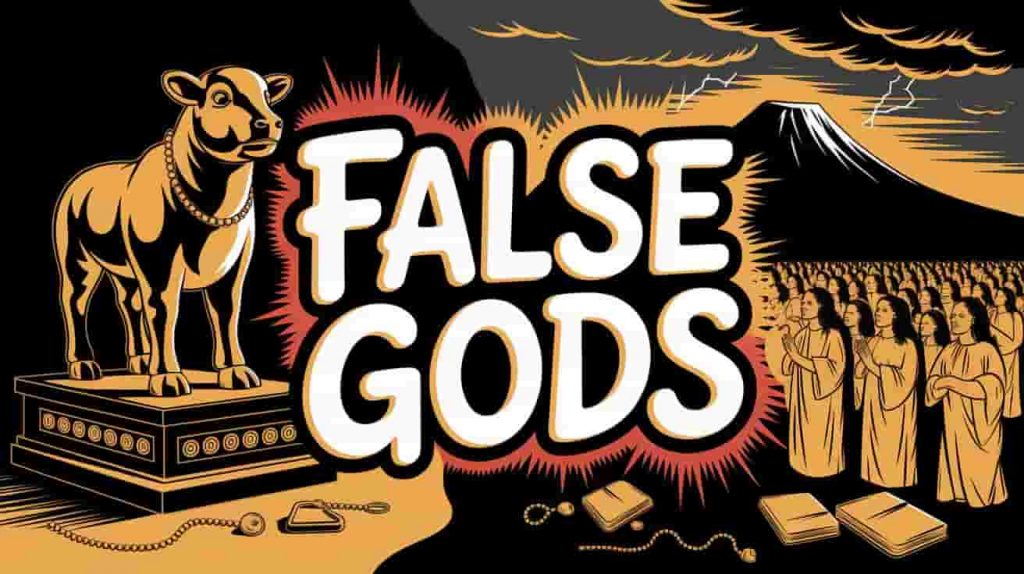
The story of the golden calf is a stark reminder of the dangers of idolatry. It occurred while Moses was receiving the Ten Commandments on Mount Sinai. The Israelites, growing impatient, pressured Aaron to create a god for them.
The Story Behind the Golden Calf
The Israelites’ demand to Aaron reveals their anxiety and a desire for a tangible deity.
They said to Aaron, as recorded in Exodus 32:1, “Up, make us gods who shall go before us; as for this Moses, the man who brought us up out of the land of Egypt, we do not know what has become of him.”
Aaron, yielding to their pressure, fashioned a golden calf from their earrings, as described in Exodus 32:2-4.
This act of creating a visible god demonstrated a lack of faith in the unseen God who had delivered them. Their impatience led them to turn to a false idol. Impatience can lead to poor spiritual decisions.
Cultural Influences on the Idol
The form of the golden calf likely stemmed from the Israelites’ exposure to Egyptian religious practices.
In Egypt, the bull was revered as a symbol of strength and fertility, often associated with deities like Apis. This familiarity might have influenced their choice of a calf to represent a god.
The temptation to revert to familiar forms of worship, even if they are contrary to God’s commands, can be strong. The Israelites’ past influenced their present actions. Be aware of how past influences can affect your current spiritual choices.
The Sin of Idol Worship
The worship of the golden calf was a clear violation of the first and second commandments, found in Exodus 20:3-6.
God had explicitly instructed them not to have other gods before Him and not to make idols. Their act of worshiping the golden calf was a direct act of disobedience and a rejection of God’s sovereignty. Exodus 32:8 records God’s assessment: “They have turned aside quickly out of the way that I commanded them. They have made for themselves a golden calf and have worshiped it and sacrificed to it and said, ‘These are your gods, O Israel, who brought you up out of the land of Egypt!’”
This incident highlights the seriousness of idolatry in God’s eyes. Placing any other thing or being in the place of God is a grave offense. Keep your devotion solely on the one true God.
Lasting Symbolism of Turning Away from God
The golden calf has become a lasting symbol of apostasy and the human tendency to stray from God.
It represents the allure of false gods and the consequences of abandoning true worship. This biblical episode serves as a warning against placing our trust in anything other than the Lord.
The lesson of the golden calf continues to resonate, urging believers to remain vigilant against the temptation to create idols in their hearts and lives. Guard your heart against anything that might take God’s rightful place.
Bulls as Symbols of Judgment and Uncontrolled Power
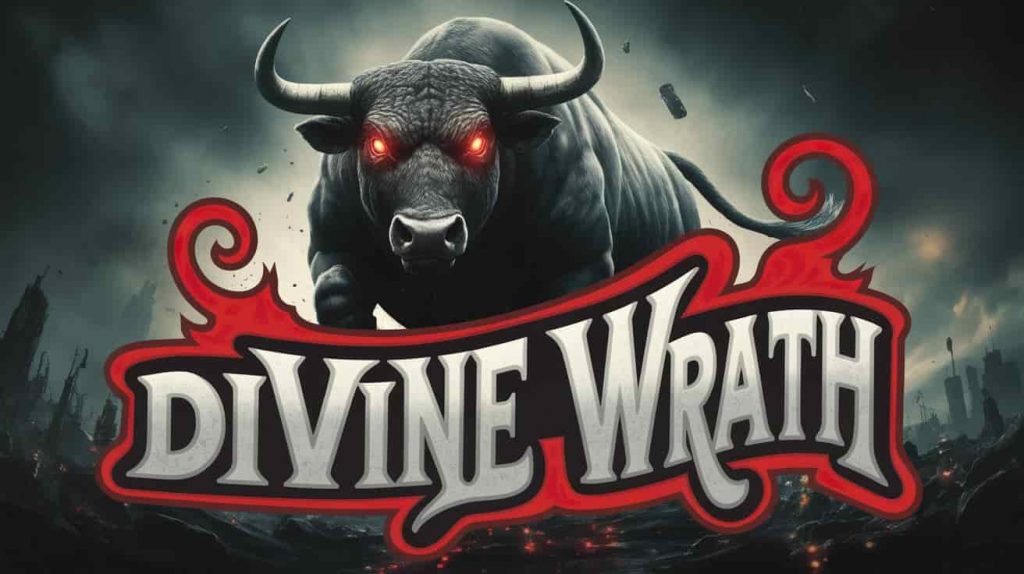
In contrast to their role in sacrifice and representations of strength, bulls can also symbolize negative forces. Their untamed nature and immense power can be associated with divine judgment or destructive forces. This aspect of bull symbolism adds another layer to its complexity.
Untamed Strength
The Bible sometimes depicts bulls as wild and uncontrollable. This imagery emphasizes their raw power and potential for causing harm. These depictions serve as a reminder of the destructive capacity of unchecked strength.
Consider the description in Psalm 22:12-13, where the writer feels surrounded by powerful enemies likened to bulls that have encircled him and opened their mouths against him “like a ravening and roaring lion.” This paints a picture of overwhelming and threatening force. Power without control can lead to destruction.
Association with Divine Anger
Prophetic writings occasionally use the metaphor of strong animals, including bulls, to illustrate God’s judgment and wrath. This imagery conveys the unstoppable and severe nature of divine anger against sin and injustice.
For instance, Isaiah speaks of the Lord preparing a sacrifice in Bozrah, where Isaiah 34:7 states, “Wild oxen shall fall with them, and young steers with the mighty bulls; their land shall be soaked with blood, and their soil made rich with fat.”
This depicts a scene of powerful beings meeting their judgment. God’s justice is powerful and will prevail.
Contrasting Meanings
The symbolism of the bull in the Bible presents a fascinating contrast. As shown in the table below, the bull can represent both positive and negative concepts.
| Positive Symbolism | Negative Symbolism |
| Strength | Idolatry |
| Power | Divine Judgment |
| Fertility | Uncontrolled Power |
| Abundance | |
| Sacrifice (Atonement) | |
| Consecration | |
| Fellowship (Peace Offering) |
This duality underscores the complexity of biblical symbolism and the importance of context. The same image can convey different spiritual truths depending on its use. Biblical symbols often have multifaceted meanings.
The spiritual meanings linked to bulls in the Bible are diverse and significant. They range from positive representations of strength, power, fertility, and abundance to their crucial role in the sacrificial system.
The cautionary tale of the golden calf illustrates the bull as a symbol of idolatry and rebellion. Furthermore, the imagery of untamed bulls can signify divine judgment and uncontrolled power.
Understanding these diverse spiritual meanings provides a deeper appreciation for the nuanced messages within biblical narratives.
By paying close attention to the context and cultural backdrop, we can gain valuable insights into the spiritual truths conveyed through the symbolism of the bull.
Frequently Asked Questions
What is the spiritual significance of a bull in dreams according to the Bible?
While the Bible doesn’t directly interpret dream symbols in a comprehensive way like modern dream dictionaries, a bull in a dream could potentially point to untamed power or stubbornness. Depending on the context of the dream, it might also suggest a need to confront a powerful challenge or to control one’s own forceful nature. Conversely, in some instances, it could symbolize strength or fertility depending on the dream’s overall message and imagery.
Are there any female bovine symbols in the Bible that carry similar spiritual weight?
The Bible more frequently uses male animals for symbolic purposes. However, cows or heifers sometimes appear, often associated with nurturing or sacrifice. For instance, the red heifer sacrifice in the Old Testament had a specific ritualistic significance for purification. While not as prominent as the bull, female bovine imagery can carry its own spiritual meaning related to provision and cleansing.
How does the symbolism of the bull compare to other strong animals in the Bible, like lions or eagles?
The bull primarily symbolizes physical strength and power, often linked to earthly authority or agricultural abundance. Lions, on the other hand, frequently represent royal power, majesty, and courage, particularly in relation to the tribe of Judah and Christ. Eagles are often associated with divine power, swiftness, and deliverance. Each animal carries distinct connotations within the biblical symbolic landscape.
Beyond literal sacrifices, does the bull have any metaphorical meaning related to Christ’s sacrifice?
Some interpretations suggest that the bulls offered as sin sacrifices in the Old Testament prefigure the ultimate sacrifice of Jesus Christ. Just as the blood of bulls provided a temporary covering for sin, Christ’s blood offers complete and eternal atonement. The strength and value of the bull as a sacrificial animal can be seen as pointing towards the spiritual meaning of Christ’s sacrifice for humanity.
How did ancient cultures surrounding Israel view the bull, and how might that have influenced biblical symbolism?
Many ancient Near Eastern cultures revered the bull as a symbol of fertility, strength, and even divinity. For example, in Egypt, the Apis bull was worshiped as a sacred animal. This widespread cultural respect for the bull likely influenced how the Israelites and the biblical authors understood and utilized its symbolism, both in positive and negative contexts, such as the idolatrous golden calf.
